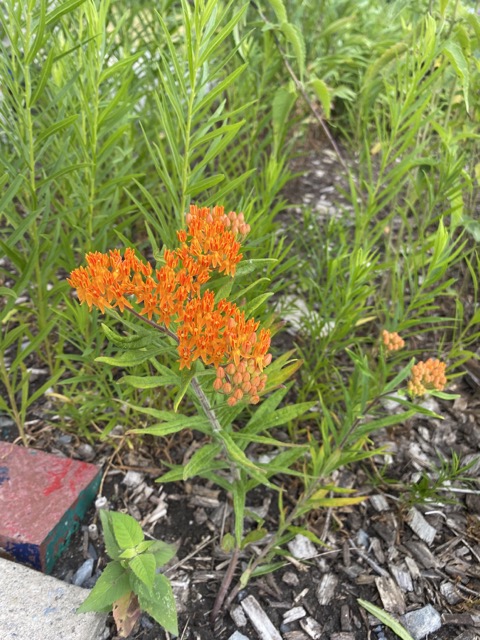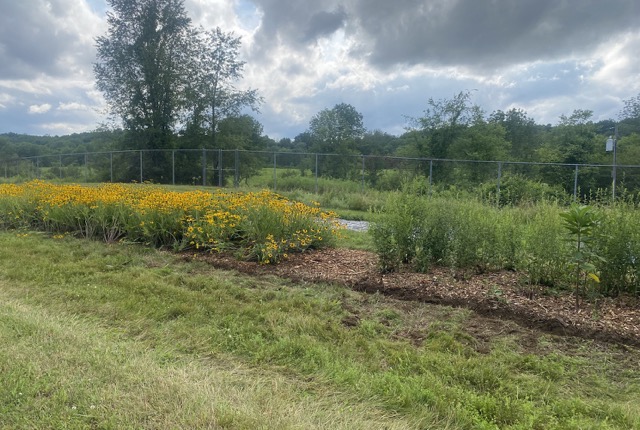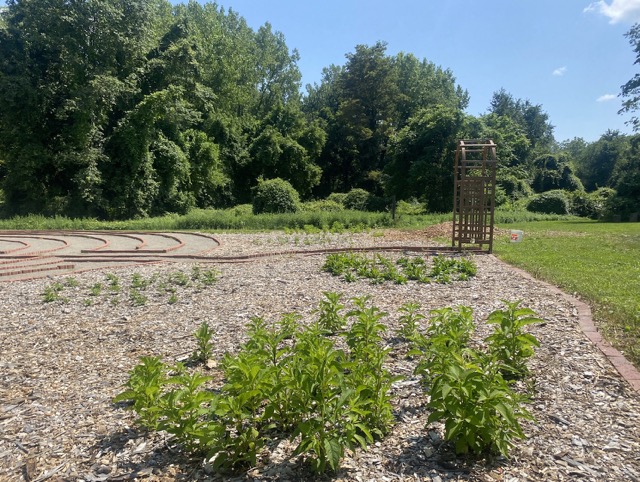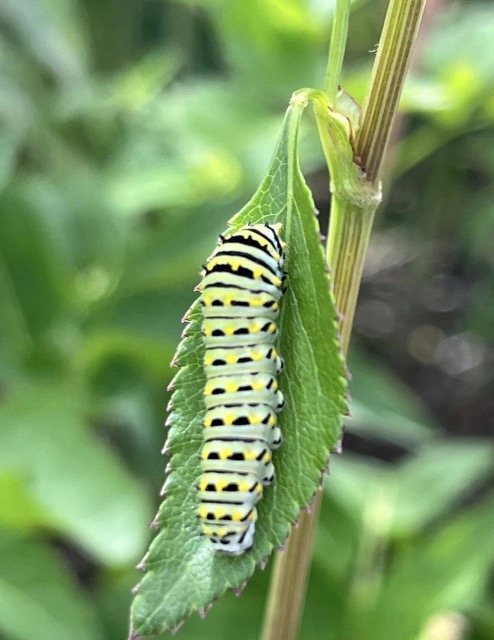Authors: Gilana Steckel, Campus Natural Areas Steward, and Clay Antonatos, Programming and Communications Coordinator
Bee Campus Affiliate: Vassar College
USDA Plant Zone: 6a
Invasive species of concern in the area: Bittersweet, porcelain berry, mugwort.
Our top 5 native pollinator plants: Butterfly milkweed, yarrow, golden alexanders, New England aster, Joe-Pye weed.
Lesson learned: Milk jugs work great for winter-sowing!
The Environmental Cooperative at the Vassar Barns, located on the Preserve at Vassar in Poughkeepsie, NY, brings together regional environmental and community organizations, educators, residents, and the Vassar College community to strengthen place-based environmental awareness throughout the Hudson Valley. As part of our mission, we strive to protect, cultivate, and spread awareness about the native plant populations and pollinators on Vassar’s campus and the Preserve at Vassar.

At the coop, we work to provide habitats for native pollinators through the creation of pollinator gardens planted with native species. We maintain four pollinator gardens at Vassar: one in front of the Environmental Cooperative, one at the Collins Field Station on the preserve, and two on campus at Sunset Lake and Wimpfheimer Nursery. In these gardens, you’ll find many bee-friendly plants, along with common milkweed, which hosts monarch butterfly caterpillars, and golden alexander, which hosts black swallowtail caterpillars.

In collaboration with the Ecotype Project, we have also created “Founder’s Plots” at the Collins Field Station, where we planted black-eyed Susan, great blue lobelia, and late purple aster. These species have adapted to our specific ecotype region and are extremely important to conserve in order to promote biodiversity and resiliency in the face of climate change. Continuing to grow and maintain our Founder’s Plots will allow us to collect and save locally adapted seeds for use in restoration projects at the preserve and in our local communities.
This summer, our team at the Environmental Coop was proud to complete a year-long project: transforming the space around the preserve’s Willow Labyrinth into a home for native wildflowers. The Willow Labyrinth was built by an Environmental Studies/English class in 2021 as a space for walking meditation. It has also been integrated into field trips for local elementary schools led by the coop. The native wildflowers that now surround the labyrinth not only support pollinators but also make the labyrinth an even more amazing place for children and adults to reflect and appreciate nature.

To plant the labyrinth garden, we spent the fall collecting seeds from wildflowers in our pollinator gardens, meadows on the preserve, and our Founder’s Plots. We carefully gathered seeds from late purple aster, Joe-Pye weed, black-eyed Susan, mountain mint, bee balm, little bluestem grass, common milkweed, butterfly milkweed, and yarrow. We collected the seeds in paper bags, being careful not to take too much from a single plant, and to source from a variety of areas to increase the genetic diversity and resilience of our seeds. The seeds were left to dry, then cleaned and stored.
After cleaning the seeds, our next step was to develop a planting plan. We winter-sowed most of our seeds, planting them into reused milk jugs and leaving them outside through the colder months of spring to germinate. It was so exciting to watch the seedlings sprout—first the bee balm, followed by late purple aster, golden alexander, and finally the mountain mint—creating mats of green across the soil in each jug. By May, everything we planted had sprouted, and we had also procured locally sourced Joe-Pye weed, foxglove beardtongue, and New York ironweed. We were ready to plant the labyrinth!

We hosted multiple volunteer days of planting wildflower plugs and winter-sown seedlings in the labyrinth. Vassar students, staff, and community members from Poughkeepsie worked together to begin to make our vision a reality. When you enter the labyrinth now, you’ll see circles of foxglove beardtongue, New York ironweed, and Joe-Pye weed at the front. On the sides, you’ll see black-eyed Susan, yarrow, and butterfly milkweed. It has been beautiful to watch the labyrinth transform into a pollinator habitat and to understand all the work that went into the transformation.

Now, we are starting to see our pollinator gardens come into bloom. The butterfly milkweed came first, with vibrant orange flowers. We were overjoyed when we found black swallowtail caterpillars on our golden alexander, their host plant. The foxglove beardtongue also quickly came into bloom, with white tubular flowers. This summer and in the upcoming year, we hope to plant even more wildflowers in the labyrinth and continue to collect seeds, maintain our pollinator gardens, plant more Founder’s Plots, and educate the community about the importance of native plants and pollinators.






